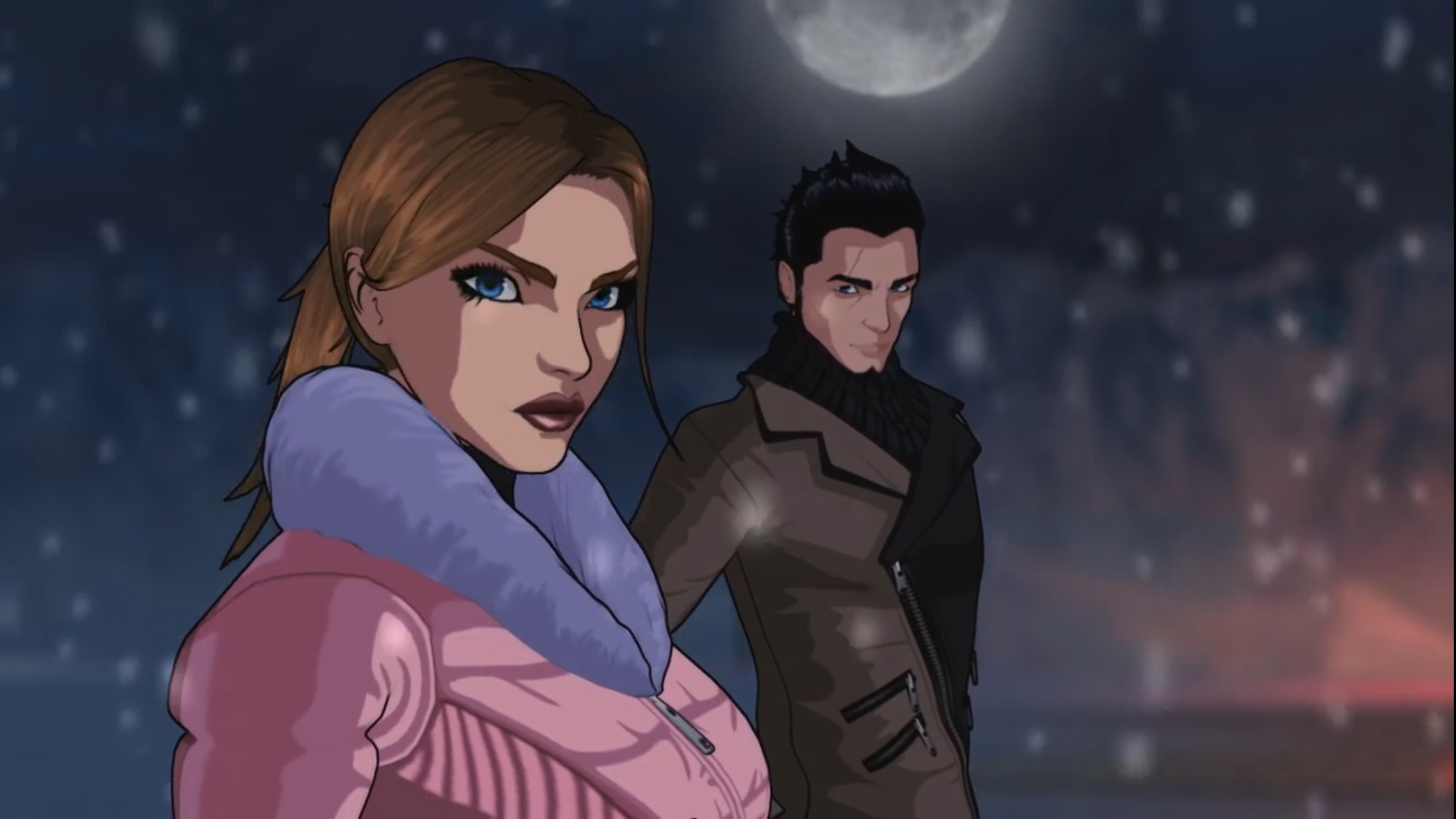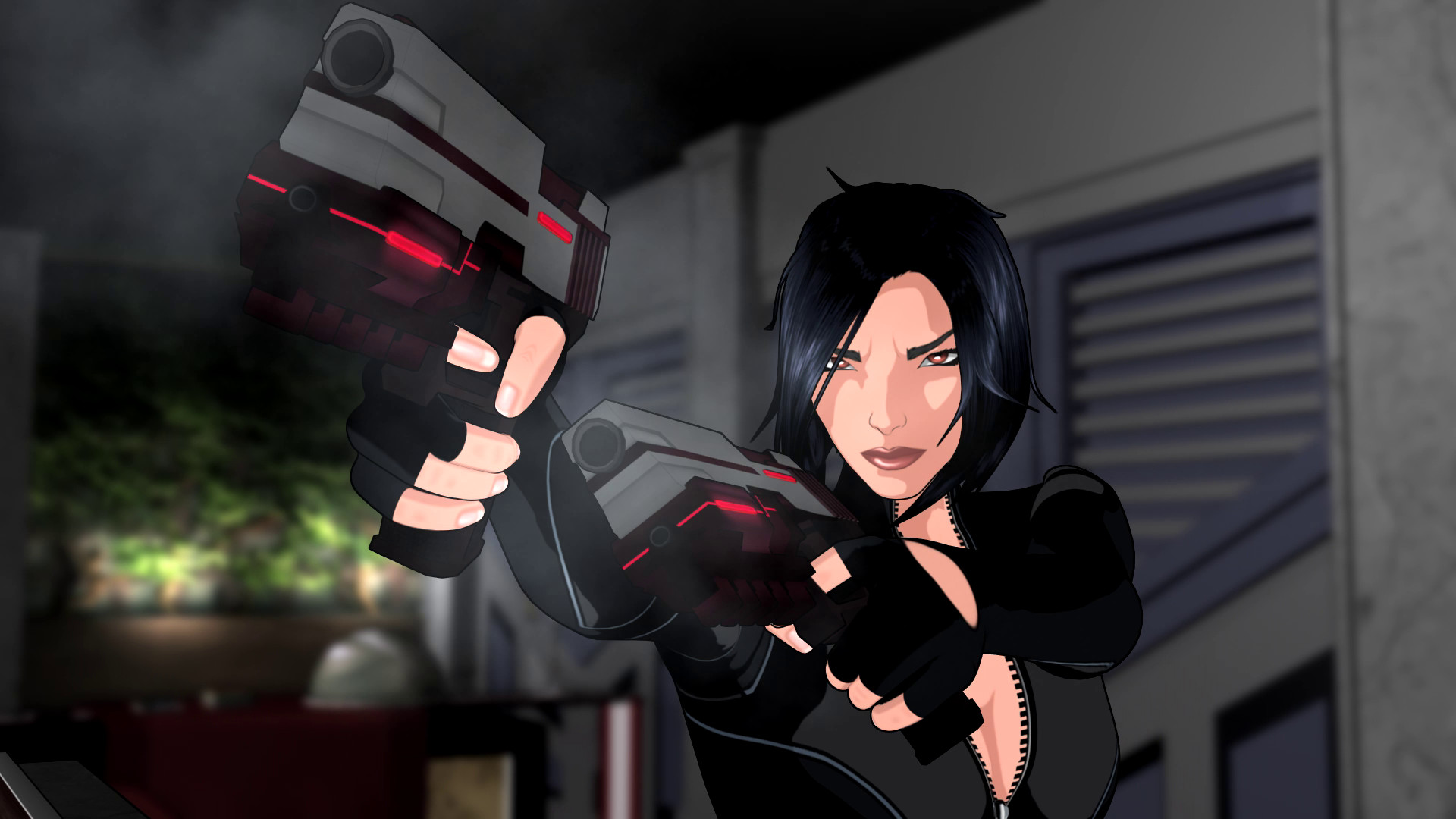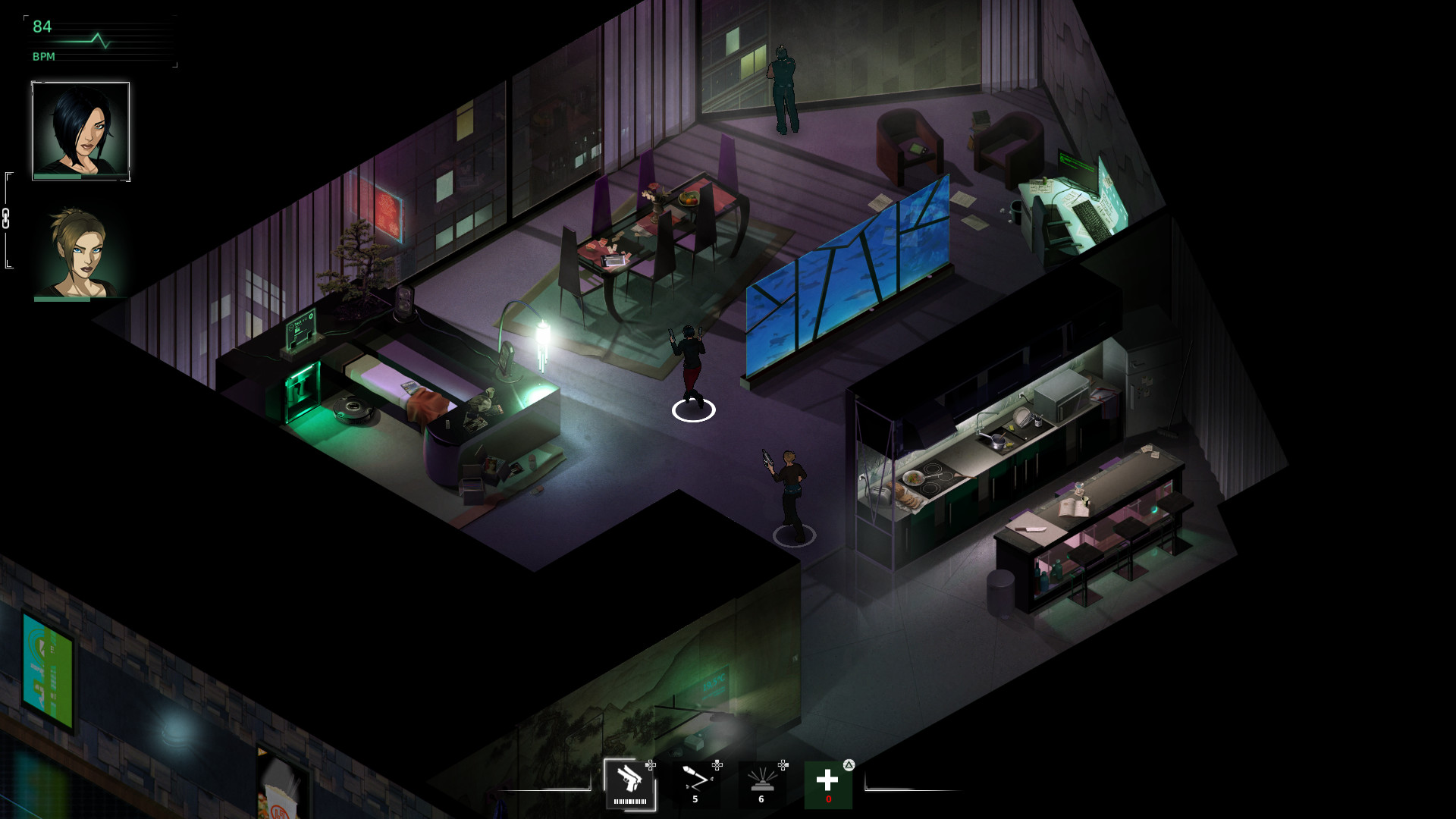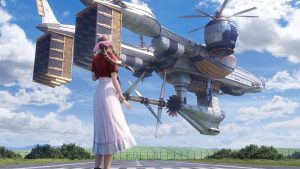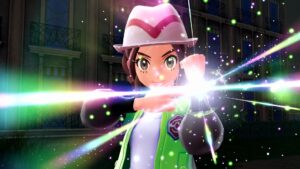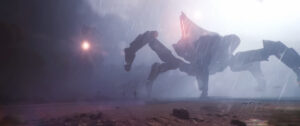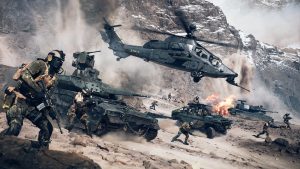
The year was 2000 and the PlayStation One was buzzing with all sorts of titles. You had classics like Vagrant Story, Colin McRae Rally 2.0 and whatnot. However, one key title that immediately stuck out was Fear Effect. It was like an amalgamation of two other classics at the time – the horror and tank-like movement of Resident Evil with the stealth of Metal Gear Solid – in one sleek cel-shaded package. Though the first game was more unorthodox than ground-breaking, it would be Fear Effect 2: Retro Helix that was most remembered. The series had transitioned to a more puzzle-focused affair, filled with numerous ways to die. There was still plenty of action though and the game’s art style and FMV backgrounds continued to give it a sleek, animated feel.
"Even the innuendo between Hana and Rain feels like it’s out of the PlayStation One era. The writing crosses a fine line between brashfully cheesy and decently compelling."
Cut to several years later with Sushee’s crowd-funded Fear Effect Sedna. Unlike previous entries, Sedna is part isometric action shooter, part tactical RPG and small bits of cover-shooting and sneaking around. How do you consolidate the previous games’ flair for cinematics and stealth action within such a format? Moreover, considering the kitschy writing and near-B-movie flair that the characters had, how can Sedna update that for the modern age?
The answers to those questions actually form a key part of Fear Effect Sedna‘s appeal. Missions are broken up with an abundance of cutscenes, deaths are vividly cinematic to the point of being excessive and the animated vibe is handled competently. Even the innuendo between Hana and Rain feels like it’s out of the PlayStation One era. The writing crosses a fine line between brashfully cheesy and decently compelling.
It helps that the main story has some intrigue with the premise of stealing a statuette for a mysterious client. However, in the beginning, we see Rain’s former (?) lover Glas taking a plane ticket from a mysterious man while battling something and producing fish guts instead of his gun. This part was significantly less compelling and more on the side of horribly cheesy.
"Despite characters animating and moving better in cutscenes with improved facial expressions, they’re not a big leap forward from Fear Effect 2."
The voice work likely doesn’t help – it’s comfortably numb (or terribly awkward) from the get-go, which doesn’t deviate too far from the original games but is still weak overall. The story continues to elevate into intriguing supernatural circumstances with cross-dimensional shenanigans but the voice acting and overall script don’t get any better.
Again, these are things that you may reject entirely and not just because you didn’t play the original games. Fear Effect has always had a particular appeal to its presentation but Sedna has several missteps. Despite characters animating and moving better in cutscenes with improved facial expressions, they’re not a big leap forward from Fear Effect 2. The soundtrack is actually pretty good, meandering through neo-noir with deep synths and techno, thus being the sole highlight of the experience.
But it’s not the aesthetics that will ultimately determine whether you’ll stick with Sedna – it’s the gameplay. The game presents itself as a tactical, isometric shooter with characters having different abilities – Hana can hit multiple targets, Rain can taze them and Glas can throw grenades – and others opening up later. You can take cover, roll to the side and pause the action midway to issue commands to your party. The Fear Gauge returns as well, granting you increased damage when it goes haywire but also making you easier to kill (which can be allayed with sedatives and the like). It’s also possible to switch between characters, something which the game makes use of during certain puzzle sequences and missions.
"Not needing to be stealthy during a rooftop infiltration but doing so while tailing someone, only to kill his entire security detail a few minutes later, is perfectly normal apparently."
The problem with the whole tactical aspect is that it’s often more effective to just go in guns blazing without worrying about any of it. Many times, I would tell my team to take position at certain points and execute certain abilities. After that, they’d stand stupidly in place while either I or they ate numerous bullets. Even worse, I couldn’t find a way to scroll the map while paused. So if I wanted to position my squad for an ambush, it just wasn’t possible.
Combat itself seems to benefit less from the cover-based aspect since enemies will frequently rush you, not that taking cover is intuitive enough anyway. So really, you’re better off just playing it in real-time, focusing on one enemy after the next so your party can team-shot and wipe out foes. You can also roll from side to side during this – it’s so important that I often forgot I could use it. So flawed is the combat that it feels like there are a number of medkits to compensate for all the damage you’ll inevitably receive.
And while I mentioned the sleekly produced cutscenes, the actual stages are pretty bare-bones and mundane. In fact, many areas look so samey with their box-like arrangements of shelves, tables, computer servers, actual boxes and whatnot. It’s not impossible to have environments that are distinct and feel interesting to fight in – Shadowrun: Hong Kong is a superb example. Even if the overall aesthetics aren’t considered, the stages just feel way too routine and boring. Also with regards to stealth, don’t worry if you can’t stay quiet during certain missions. Not needing to be stealthy during a rooftop infiltration but doing so while tailing someone, only to kill his entire security detail a few minutes later, is perfectly normal apparently.
"It’s not like Fear Effect Sedna is offensively bad (except when you mess up a puzzle for the dozenth time in a row) but it does nothing to endear you. "
This being Fear Effect, it only makes sense that there would be puzzles. Honestly, my experience with them was hit or miss. I didn’t mind resizing triangles and rhombuses while hacking as Rain but going back through the initial stage, just to figure out how to disarm the trap on some cargo? Trying to figure out the passcode for the door leading forward to this elegant art collection? Oh and if you don’t solve them successfully, you’ll witness the characters killed in all sorts of gruesome ways.
On the one hand, there seems to be a deliberately old-school aspect to the puzzle solving as you make observations, fail at the solutions and try again. On the other, it doesn’t feel like the game does much to naturally lead you to solutions other than “What, you didn’t notice that one thing? Well, you’re dead now.” Not all puzzles are like this though and there are certain instances – like moving walls to successfully avoid being detected by cameras as you run across – that work fairly well.
Fear Effect Sedna‘s stylish presentation and understanding of the old games’ atmosphere feels severely let down by the terrible tactical action, bad AI, boring level design and annoying cover shooting. Even what should be the biggest appeals of the game, the voice acting and writing, just feel flat as a whole. It’s not like Fear Effect Sedna is offensively bad (except when you mess up a puzzle for the dozenth time in a row) but it does nothing to endear you.
This game was reviewed on PC.
Cutscenes are well animated and the writing captures the schlocky essence of Fear Effect for the most part. Good neo-noir soundtrack that adds to the mood of stages. Intriguing story at the outset.
Actual gameplay is incredibly underwhelming from the bad cover mechanics to the terrible tactical strategy. Allies have terrible AI. Stages feel incredibly similar and boring. Writing and voice work suffer overall and undermine the overall story's urgency. Puzzles mostly range from typical to downright irritating.









